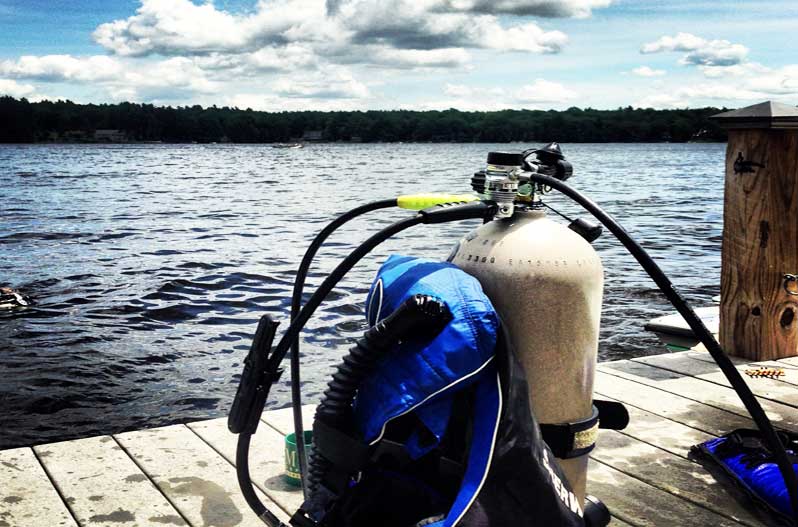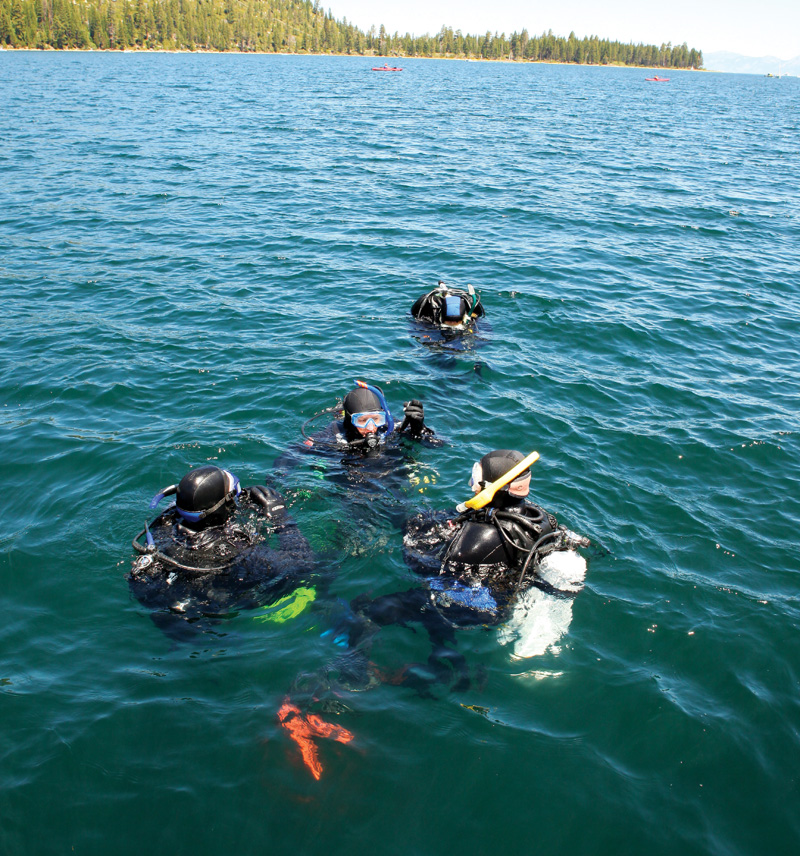
While California has excellent ocean diving, thousands of US divers primarily dive lakes, quarries, and other inland waters.
When it comes to strapping on scuba gear and heading out to dive, the first images that come to mind are crystal clear waters, tropical locales, and unlimited visibility. Salt water creatures like lobsters, octopuses, and sharks capture the imagination. People dream of vivid coral reefs teeming with exotic life, colored as only Disney could imagine. The reality, however, is that an extremely large portion of the diving population spends their diving time in fresh water lakes. While the sport is essentially the same, the differences in environments pose some unique challenges.
1.) Know Your Altitude
Altitude diving is considered any dive made 1000ft above sea level or higher. If you aren’t using a dive computer, then these dives require special tables that offer adjusted “no decompression” limits. Many lakes visited are high mountain lakes, but even a large majority of the lakes across the rest of the US are located above 1000ft and should be technically treated as altitude dives.
2.) Bring a Knife
Lakes often look like calm and harmless places to swim, fish, or boat. It’s important not to let that placid illusion deter you from staying equipped. Lost fishing tackle and monofilament line litter the bottom of any lake that hosts fish and fishermen. Virtually invisible underwater, fishing line is a serious danger to divers as it can entangle the diver, potentially trapping them underwater. Always take at least one dive knife or line cutter on your dive.
3.) Light It Up
Lakes are typically less affected by currents and tidal movements that occur in the ocean. Because of this relatively calm state, sediment builds over time into a thick layer of mud or silt. When disturbed, sediment can create a cloud that completely limits visibility and can literally take hours to settle. A strong dive light, even during daytime dives, is important. Using split fins or a style of fin that is less likely to disturb the bottom is another way to avoid stirring up a murky cloud.
4.) Know the Way Home
While not always the rule, more often than not, diving in a fresh water lake is done from the shore. Naturally, this requires the diver to enter and exit from the same point. An easy to read compass can be an essential item to help return you to your entrance point. It’s either that or a potentially long, wet walk trying to remember exactly where you parked.
5.) Boots Made for Walking
The bottom of many lakes can conceal rocks or other human debris such as broken bottles or cans. A nice pair of hard sole boots for your entry and exit can offer protection from potentially harmful unseen debris.
6.) Mind Your Buoyancy
Sea water is denser than fresh water due to the amount of dissolved salt. Items that are neutrally buoyant in salt water will sink in fresh water. Fresh water is also typically colder than sea water, requiring extra insulation like additional layers, a thicker wetsuit, or even a drysuit. These factors combined mean the diver’s buoyancy is going to be different in each environment. Be sure to perform a brief buoyancy check and gauge your proper weighting for optimal neutral buoyancy.
7.) Not All Lakes Are Created Equal
While the majority of lake diving offers fairly shallow calm conditions that are perfect for the average recreational scuba diver, exceptions abound. The Great Lakes between the US and Canada are large, deep bodies of water. Littered with wrecks, the Great Lakes can offer challenges on par with any ocean. Cenotes (natural pits) and sink holes are found all over the planet, and offer glimpses into the past that are nearly impossible to find above water. However, these natural formations often conceal difficult environments such as caverns, caves, and large aquifer systems. As with any new situation, be sure to seek proper training before attempting any dive in conditions outside your basic open water or entry level diving class.
Diving in lakes is an expansive topic, and different lakes have their own hazards and quirks. For additional tips for fresh water lakes, specific lakes, or for any kind of environment, contact your local dive shop or the knowledgeable scuba instructors at Scuba.com.
Story by Scuba.com, distributed through PRWEB

